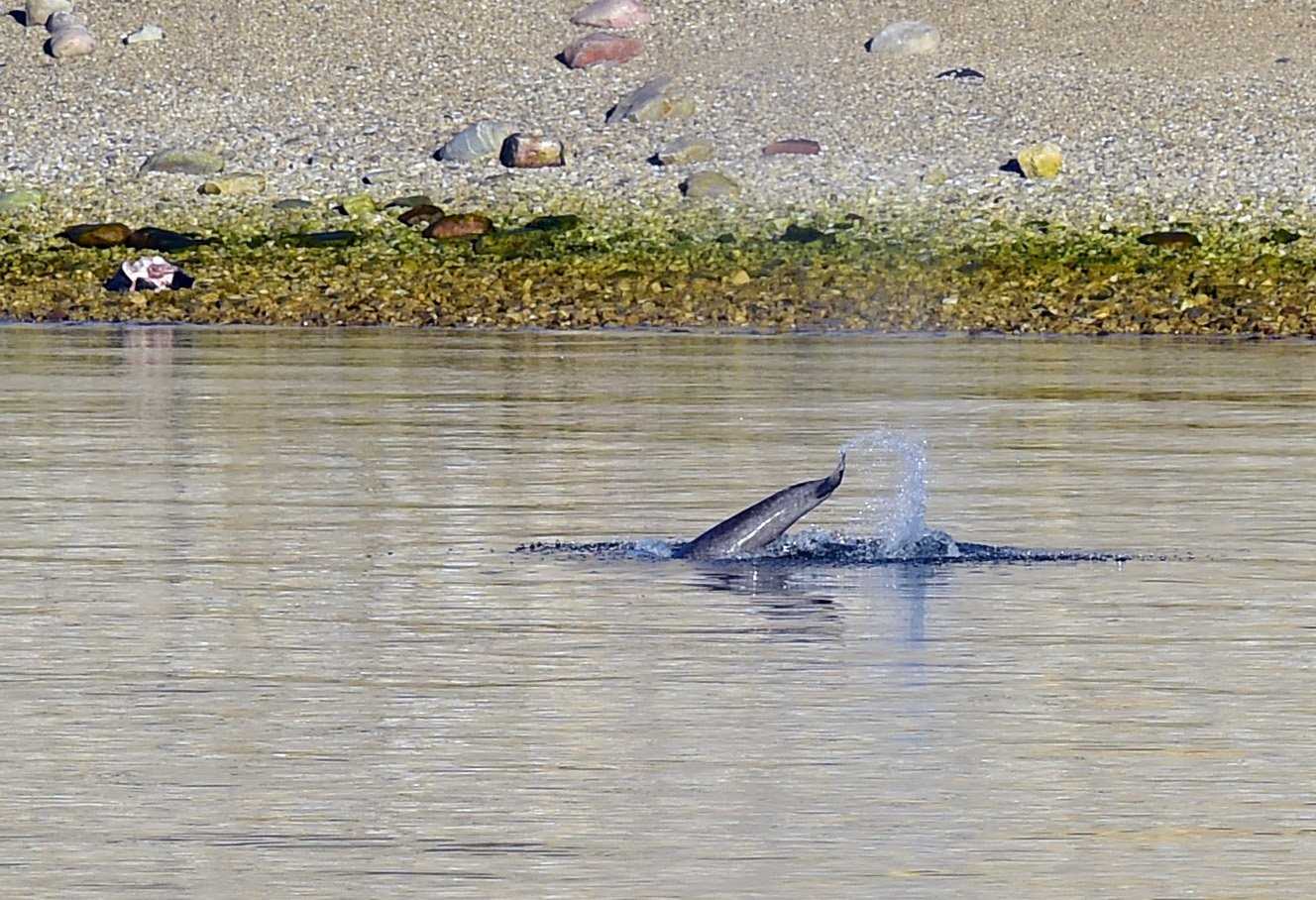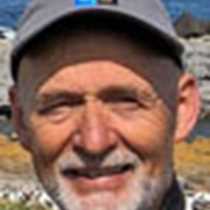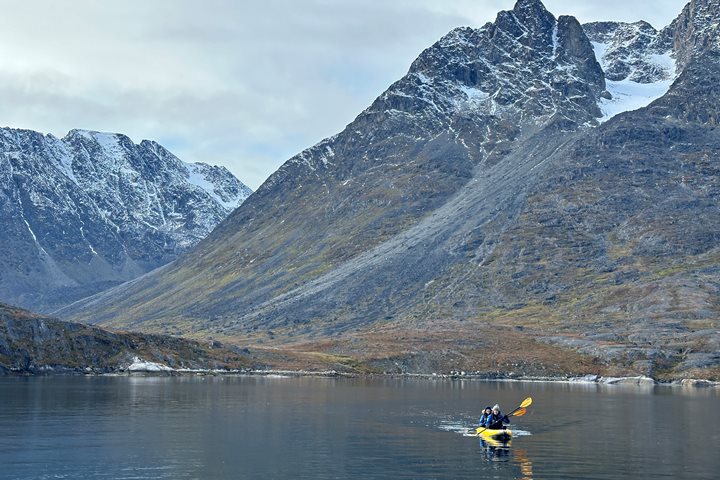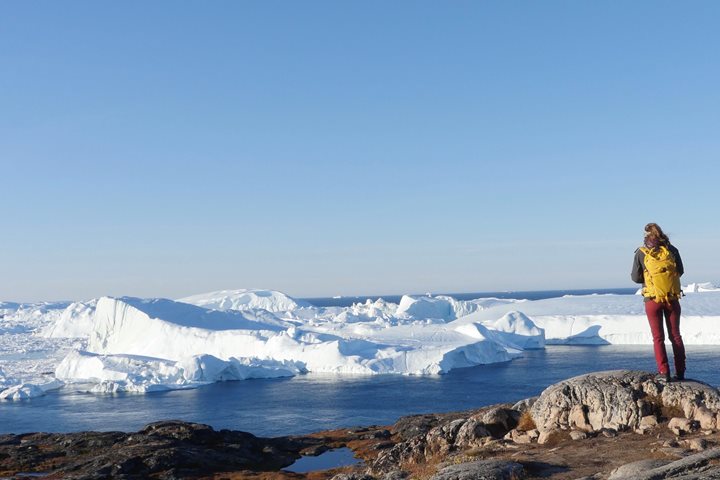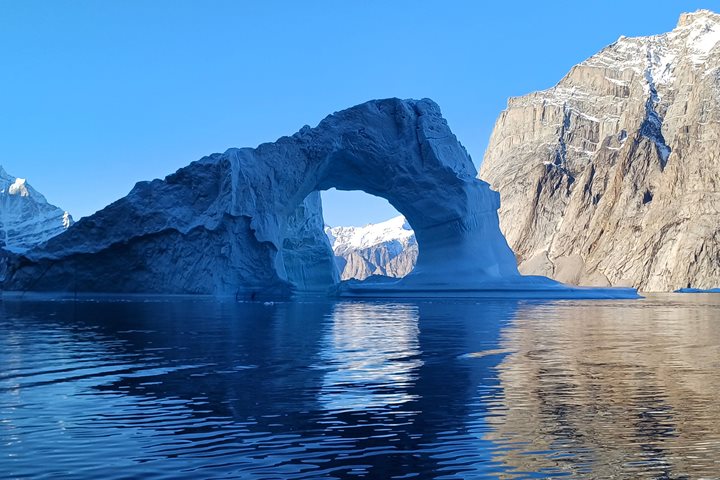The Narwhal Day!
The day started before breakfast as the ship was sailing in Milne Inlet. There are many Arctic icons everyone has high hopes to encounter while visiting the High Arctic; polar bear, walrus, ivory gull, and snowy owl but still one stands out as number one, the narwhal. On the PA-system the word everyone was hoping to hear was called out–NARWHALS! Several pods were cruising along the beaches on both sides of the Inlet and also further out in the open water.
Very rapidly we found out that we were not the only ones interested in the narwhals as several Inuit hunting camps are located along the shoreline and we heard gunshots. We have to remember, hunting the marine mammals by the eskimos (Greenland) or Inuits (North America) has a long history, and it was once the only way to secure fat and proteins to survive the long dark winter. Using old tools, species were never over-hunted, but today with modern equipment things are very different. Add in also an ever growing number of people hunting with this type of equipment.
Several whales were hit, but according to our Inuit guide Jamie Anilniliak from Baffin Island, these whales sink in the shallow inshore water and can later be retrieved. The narwhal is hunted during summer as they enter the fjords and sounds of eastern Arctic Canada, and during their migration to and from these areas. They winter in Baffin Bay, in polynias (open water in the sea ice) and this is the time they feed, mainly by very deep dives to catch Greenland halibut. Here, if the winter gets extremely cold and the ice starts to freeze up over these polynias, huge numbers can concentrate in small open areas and of course are also hunted, both by the natives and hungry polar bears. On the Greenland side this is called ‘Sassat’.
The name ‘narval’ comes from the old Norse, ‘nar’ meaning ‘a dead corpse found in the sea,’ which is correlated to their skin coloration, and ‘val’ which is of course ‘whale.’ Obviously the Vikings who settled in southwest Greenland know about the whale’s tusk, and most likely brought these to Scandinavia and from there south into Europe through trade. Maybe this is how the stories during medieval time about ‘the unicorn’ originates? Strange enough, in older eskimo middens narwhal tusk seems never to have been of any importance, while tusks from walrus were used for ivory carvings.
We decided to leave the hunting area and search for the whales, further out in the inlet, and all through the morning more narwhals were sighted. Exactly how many we sighted throughout the morning is hard to tell. Plenty for sure!
To get decent photos of this elusive whale turned out to be tricky, as they are darkish, lack any dorsal fin, a very barely show their body as they surface for a very in-descriptive blow and additionally they are shy and avoid noise. To see the famous ‘unicorn’ horn grown out from one of its two teeth, in the upper jaw, is even harder but those more persistent on the bow did catch glimpses. At least everyone can say, ‘I have seen one of the Arctic icons, the narwhal!’’
Before lunch we set our course north through Navy Boarder Inlet, one of many place names in the Canadian Arctic tied to the eternal English dream, to conquer the Northwest Passage as a shortcut to ‘Cathay’ (China). We are between Baffin Island and Bylot Island, both men on the ship Discovery in 1618, Willian Baffin as pilot and cartographer and Robert Bylot as captain.
Karen Copeland gave her presentation, ‘Arctic Plant Adaptations.’ We continued after lunch north along the inlet and to starboard, on the slopes of Bylot Island, and we sighted huge flocks of snow geese now gathering before their migration to winter locations along the U.S. eastern seaboard. In 1965 Bylot Island became a national park mainly set aside as a bird refuge. We also sighted long-tailed jaegers, and ringed and harp seals.
By 3 p.m. we reached our set landing site, and it was time to use our Zodiac fleet and stretch our legs. Soon everybody was ashore at Qammarjuit Point, Borden Peninsula, Baffin Island and we were in real wilderness. All guides were well prepared with tools in the unlikely event we would encounter any white bears on land. Tracks were seen. During the outing the wind picked up and returning to the ship became an eventful ride right into rapidly building waves. Except for a few splashes most made it back dry and it was soon time for Recap and dinner.
From now on every day will be a true adventure, the wind, the waves, and the ice will decide our adventure–a real expedition! As the sun was setting we sailed out into the body of water named after Sir James Lancaster, the eastern entrance to the Northwest Passage.

